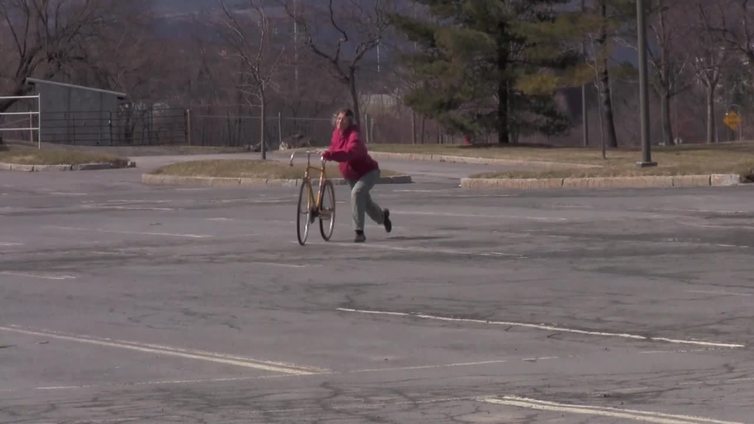What is Countersteering?
Countersteering is exactly what it sounds like. You want to turn left and so you start by steering right.

As counter intuitive as this sound, it is even more counter intuitive that if you have ridden enough, you are already doing this instictively.
What is the point of Countersteering?
When we are trying to turn away from the straightline, inertial path of the cycle, the cyclist is going to experience a pull towards the straightline path which can be represented as a Centripetal force. This must be countered by the cyclist leaning into the curve.
Countersteering is the most effective means of making that happen at higher speeds. By turning away from the curve, it is the cyclist moving in a straightline, only this time towards the desired turning direction. The result is the cyclist finds themselves being pulled into the correct lean.
As for the front wheel, the road forces acting on the tire are going to be such that they “push” the tire into the opposite direction. The net result is both the cyclist and the cycle are pushed into the desired turning direction.

Do I have to Countersteer when Turning?
No. But it brings you into a lean more naturally. If you did not Countersteer, you would have to initiate the lean on your own, essentially “falling over” in the direction of the turn. At low speeds, this is not a big deal, but at anything above slow speeds, this is the way you are most likely turning already.
Countersteering and Balance
Countersteering is a critical element in maintaining balance. Again this is something we do instinctively. Based on work done at Cornell University, it is demonstrated that contrary to the idea it is the gyrosocopic motion of the wheels that keeps a bike upright, it is countersteering. If you are losing balance to the left, you are falling to the left. Turning you wheel to the left will cause you to fall to the right.
When you have learned to balance yourself, you have effectively taught your hands to sense which way you are falling at any given time and to turn into the fall to correct yourself. These turning motions are small and something done without thinking or even noticing.

http://www.cornell.edu/video/andy-ruina-explains-how-bicycles-balance-themselves
Next Topic: Cycle Stability
